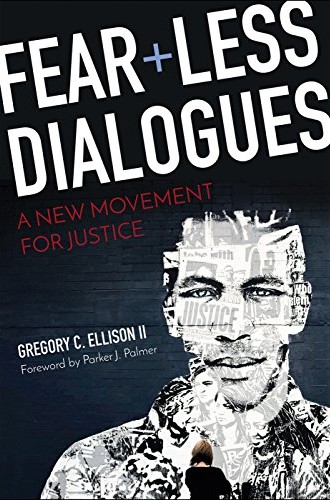In the Fearless Dialogues movement, people try to truly see each other
Gregory Ellison II's book evokes the sort of honest conversations he has been convening.
In July 2013, George Zimmerman was found not guilty of second-degree murder in the death of Trayvon Martin. In the weeks leading up to the trial, as discussions of racially motivated violence roiled public consciousness, Gregory Ellison II was teaching a seminar on racism at Emory University in Atlanta. The day of the Zimmerman verdict, Ellison and his students took to social media and the radio to invite others in the Atlanta community to join their conversation. A week later, 300 people of varied backgrounds showed up and Fearless Dialogues was born.
In the book that shares its title with the movement, Ellison combines social theory, case study, and memoir to demonstrate how change takes hold among people typically divided by race or class. Early on, Ellison engages readers as active participants. The text is meant to evoke honest conversation. It is also meant to provoke a confrontation with the self by addressing the fear that arises between those with power and those without it. Ellison challenges readers to take a posture of humility or “lessness” in order to counteract the fear of the other. “Please accept my invitation to you, Beloved Reader, to join Fearless Dialogues as our latest unlikely partner.”
Read our latest issue or browse back issues.
What follows is an overview of the Fearless Dialogues experience, which has been repeated in dozens of contexts with more than 15,000 participants worldwide. During a daylong workshop, participants explore their own stories and their own value, confront the prejudices of others, and are challenged to be agents of change starting with those in close proximity.
Ellison, who teaches at Emory’s Candler School of Theology, draws from theology, psychology, and anthropology to create the curriculum for the dialogues. He also introduces writings that have influenced the movement and invites readers to wrestle with those texts. For example, after including an excerpt from The Inward Journey by Howard Thurman—“To be ignored, to be passed over as of no account and of no meaning, is to be made into a faceless thing”—Ellison prompts readers to consider a time they have been overlooked, and a person they might be prone to overlook.
There are moments when Ellison successfully draws readers into the world of Fearless Dialogues, such as when he describes an interaction with a member of a prison choir who showed up to sing at the end of the night. Meeting him at the door, Ellison looked him in the eyes and offered the greeting that has become the movement’s mantra: “It is good to finally see you.” The man confided to Ellison that he had been skeptical about coming that night. But after being greeted in such an intentional manner, he’d said, “I already got what I needed. Thank you for taking the time to see me.”
At other times, Ellison only hints at the transformation that takes place between participants of different backgrounds. He tells of an academic listening intently to the story of a young drug dealer, of a corporate executive paired in a group with a former gang member, and of neighbors who had never interacted finding a sense of community through the workshop. However, his descriptions of those encounters tend to be superficial.
Ellison often seems to forget his direct address to the “Beloved Reader.” On the sporadic occasions when he returns to that direct call, it is more distracting than effective. And while Ellison’s stated aim is to evoke honest dialogue and provoke a confrontation with the self, he rarely offers suggestions to readers about how to translate the workshop material into their own context.
The most engaging aspect of the book is Ellison’s own self-revelation. He opens with a letter to his nine-year-old son, continuing in the tradition of James Baldwin and Ta-Nehisi Coates, whose public letters to black boys in their lives have functioned both as personal address and as vehicles for social critique. As Ellison responds to his son’s provocative questions—“Will our Muslim cousins have to leave the United States? . . . Another black boy, really? . . . Am I safe?”—he finds inspiration to keep the work of Fearless Dialogues going.
Ellison further reveals his own story by recounting memories from his childhood: of his grandmother, who practiced “radical hospitality” by feeding and listening to all in her path, and of a cherished friend who was shot to death in front of Ellison while mediating a conflict. He divulges the pain of feeling unseen in his doctoral program at Princeton, recalling how during seminars his observations often fell on deaf ears. He recounts his struggle with his vocational identity, and he intersperses his own poetry throughout the book. In the end, it is this memoir portion of the book that makes the biggest impact.
In a time rife with race and class tensions, there is no stand-alone resource for combating the social prejudices embedded in our nation’s DNA. Such work will require many strategies, many voices. This book’s greatest contribution to the conversation is its insistence on micro-changes that begin with each of us confronting the conscious and subconscious biases within, then opening ourselves to the experiences of others. Ellison’s witness is a helpful reminder that part of the path forward is to fear a little less.







